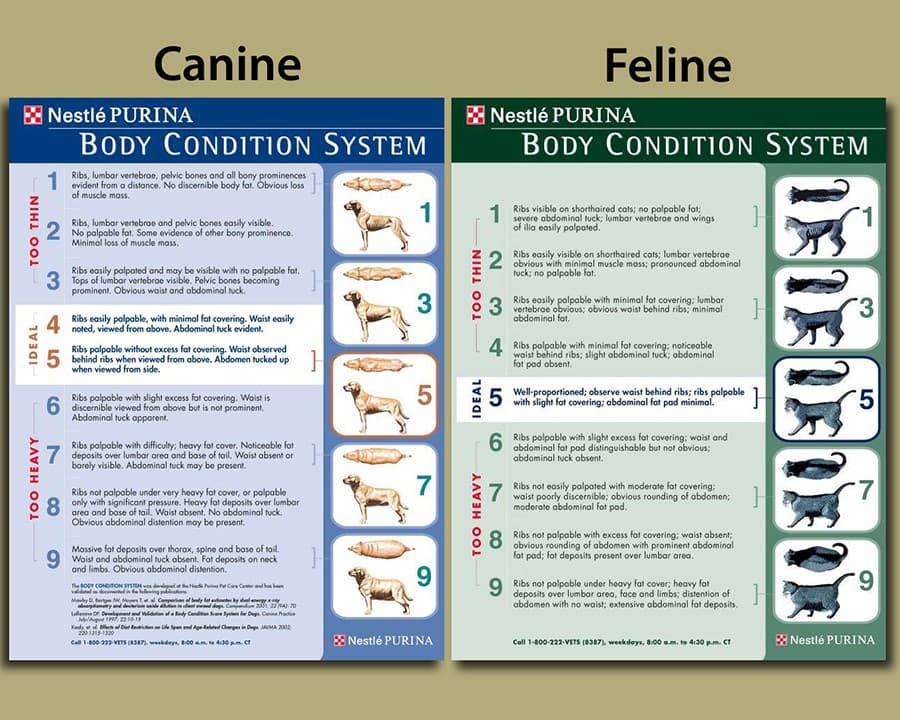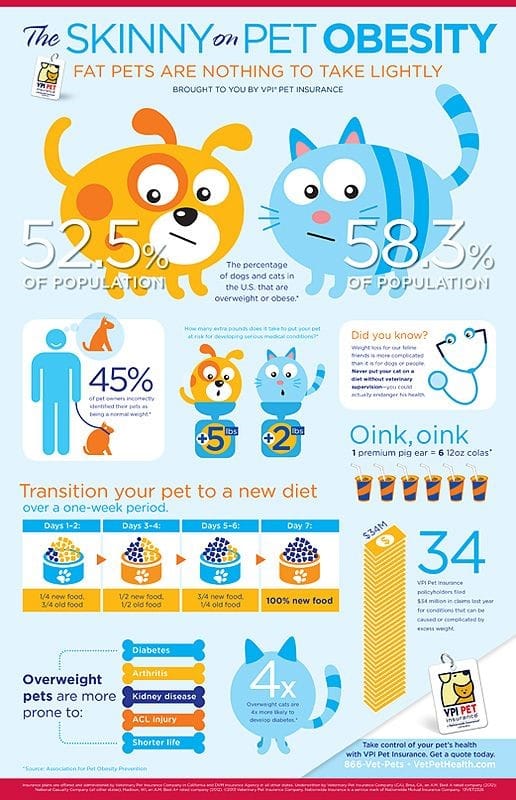Does your pet need a diet?
When taking your pet to the vet, do you often wonder if you are feeding your pet too much or too little? Do you notice any ribs, a waistline or even a belly? If you answer yes or no to any of these questions you may need to change your pet’s diet.
Determining your pet’s body condition score is a good way to recognize underweight or over weight animals. A weight number alone is not an accurate way to determine if your pet needs to gain or lose weight. Take a look at the chart below to see what body condition score your pet is at, then Dr. McGarry can assess your pets’ body condition score when he/she is here for an appointment. We can help you determine if the amount of food you are feeding now is the best amount, if you need to add in anything or even just change treats.

Some healthy alternatives for dog treats:
- Baby carrots
- Sweet potatoes
- Green beans
- Cucumber
- Celery
- Broccoli
- Cauliflower
- Tomatoes
- Lettuce
- Pumpkin
- Pears
- Pineapple
- Apples with out the seeds
- Cantaloupe
- Watermelon
- Mango
- Bananas
- Blueberries
- Peaches
- Raspberries
The most accurate way to determine how many cups of food your pet should have in a day is by counting calories. Each bag or can of food will say how many Kcal’s per cup are in the food.
Here are a few simple steps to follow to ensure the proper amount of food being fed each day.
- Find the food analysis on the food bag and look for: Calorie Content
- You will need to located the amount of calories per cup, it will read as follows: #kcal/cup
- EX: on hills feline c/d the calorie content is 349kcal/cup
- Next you need the most recent weight on your pet in (kg)
- To change lbs to kg: lbs divided by 2.2 equals kg
- Example a 22 lb pet weighs 10 lbs
- Now to the calculations:
- 30 X (weight in kg’s) + 70= the amount of kcal’s per day
- Feline: take the number in 4a X 1.4= kcal/day for your cat, then divide that number by kcal/cup that you found in step 2. This is the amount of food per day your cat can have to maintain their current weight.
- Canine: take the number in 4a X 1.6= kcal/day for your dog, then divide that number by kcal/cup that you found in step 2. This is the amount of food per day your dog can have to maintain their current weight.
Example:
10-pound cat on Hills Feline c/d
- 10lbs/2.2kg= 4.6 kg’s
- 30X4.6+70=208 kcal/day
- 208kcal/day X 1.4= 291 kcal/day
- 291kcal/day / 349 kcal/cup= 0.8 of a cup which is about ¾ cup a day.
If you need help calculating out the amount of food, please feel free to call and speak with one of the technician’s in order to ensure the correct amount.
